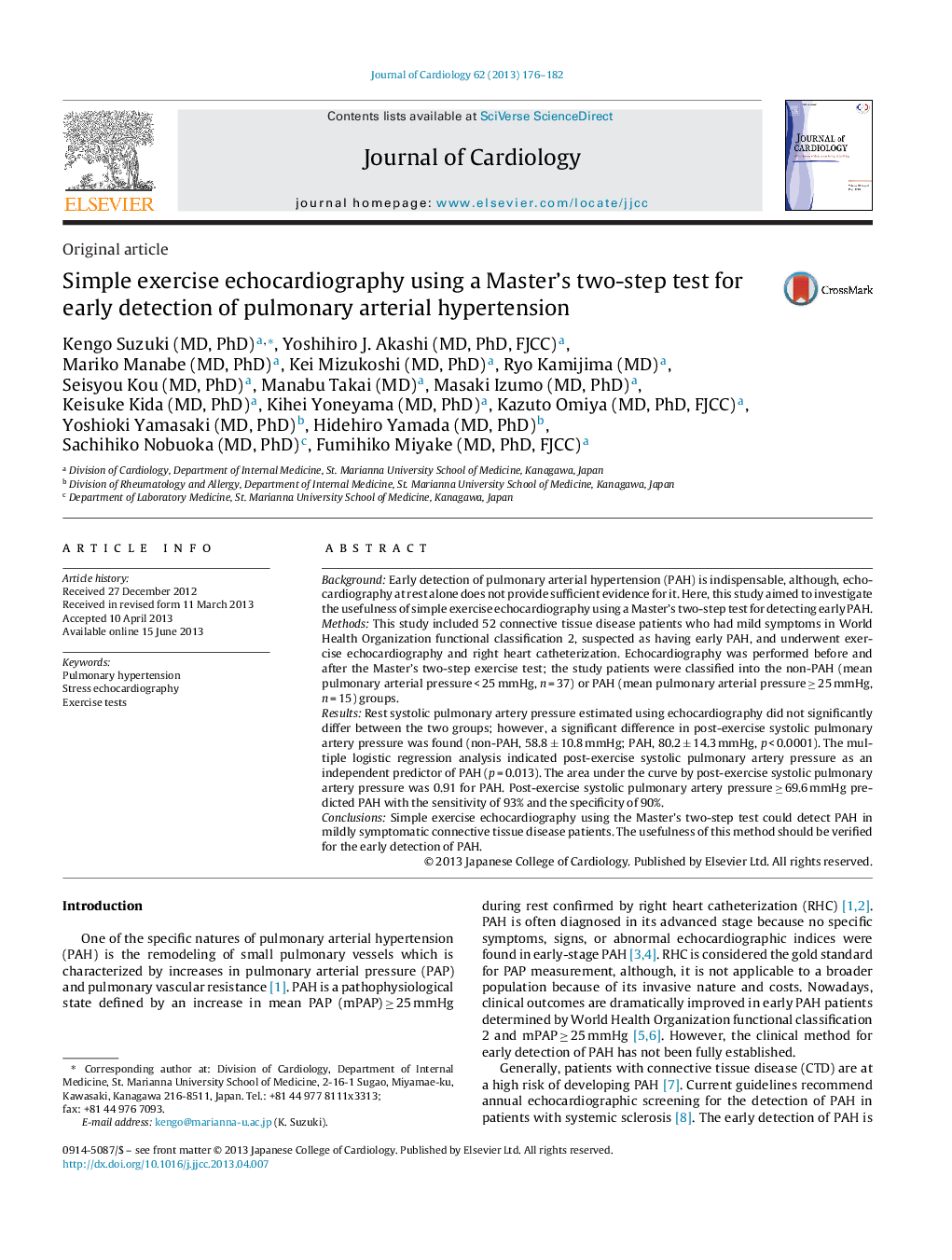| Article ID | Journal | Published Year | Pages | File Type |
|---|---|---|---|---|
| 5984313 | Journal of Cardiology | 2013 | 7 Pages |
BackgroundEarly detection of pulmonary arterial hypertension (PAH) is indispensable, although, echocardiography at rest alone does not provide sufficient evidence for it. Here, this study aimed to investigate the usefulness of simple exercise echocardiography using a Master's two-step test for detecting early PAH.MethodsThis study included 52 connective tissue disease patients who had mild symptoms in World Health Organization functional classification 2, suspected as having early PAH, and underwent exercise echocardiography and right heart catheterization. Echocardiography was performed before and after the Master's two-step exercise test; the study patients were classified into the non-PAH (mean pulmonary arterial pressure < 25 mmHg, n = 37) or PAH (mean pulmonary arterial pressure â¥Â 25 mmHg, n = 15) groups.ResultsRest systolic pulmonary artery pressure estimated using echocardiography did not significantly differ between the two groups; however, a significant difference in post-exercise systolic pulmonary artery pressure was found (non-PAH, 58.8 ± 10.8 mmHg; PAH, 80.2 ± 14.3 mmHg, p < 0.0001). The multiple logistic regression analysis indicated post-exercise systolic pulmonary artery pressure as an independent predictor of PAH (p = 0.013). The area under the curve by post-exercise systolic pulmonary artery pressure was 0.91 for PAH. Post-exercise systolic pulmonary artery pressure â¥Â 69.6 mmHg predicted PAH with the sensitivity of 93% and the specificity of 90%.ConclusionsSimple exercise echocardiography using the Master's two-step test could detect PAH in mildly symptomatic connective tissue disease patients. The usefulness of this method should be verified for the early detection of PAH.
